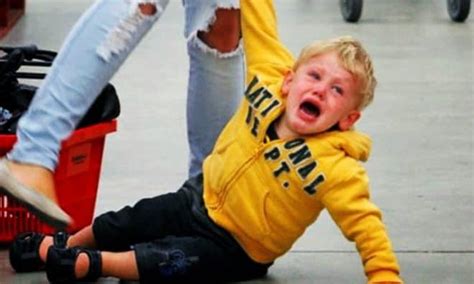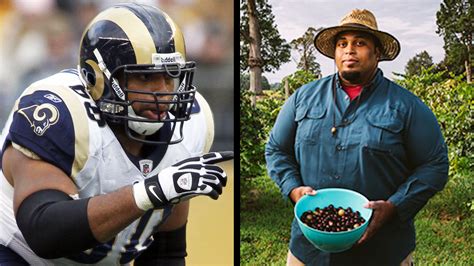
A cockatoo named Ollie has become an internet sensation after a video of his theatrical reaction to nearby fireworks went viral, showcasing what many are calling an “Oscar-worthy performance.”
A video posted on social media captured the moment Ollie, a white cockatoo, reacted to the sounds of fireworks, displaying a range of exaggerated expressions and movements that have amused and captivated viewers worldwide. His dramatic responses, including wide-eyed stares, head bobbing, and seemingly attempting to hide, quickly turned him into a viral star, prompting widespread discussion and entertainment across various online platforms. According to his owner, the reaction is not typical, making the video all the more amusing.
The video, which has garnered millions of views, shows Ollie initially perched calmly before the first firework sound is heard. His eyes widen noticeably, and he begins to sway slightly. As the fireworks continue, Ollie’s reactions escalate, including flapping his wings, bobbing his head vigorously, and appearing to seek comfort from his surroundings. The dramatic display has resonated with viewers, many of whom have commented on Ollie’s expressive behavior and comedic timing.
“He usually isn’t bothered by them, but something must have spooked him this time,” his owner explained in a comment accompanying the video. This unexpected reaction is what contributed to the clip’s viral success, with many users finding humor in the bird’s over-the-top response.
Animal behaviorists suggest that Ollie’s reaction could be attributed to a combination of factors, including the sudden loud noises, the unfamiliar sensory experience, and the bird’s natural instincts. Cockatoos are known for their intelligence and sensitivity, and they can be easily startled by sudden changes in their environment. The combination of these elements likely contributed to Ollie’s dramatic display.
The viral video has also sparked a broader conversation about the impact of fireworks on animals, with many advocating for more responsible use and consideration for the well-being of pets and wildlife. Animal welfare organizations often advise pet owners to take precautions during firework displays, such as keeping pets indoors, providing a safe and comfortable environment, and masking the noise with music or white noise. Ollie’s case serves as a humorous but poignant reminder of the potential distress fireworks can cause.
The Viral Sensation
The video of Ollie’s performance quickly spread across various social media platforms, including TikTok, Instagram, and X (formerly Twitter). Users shared the clip widely, adding their own captions, comments, and memes, further amplifying its reach. Many viewers praised Ollie’s comedic timing and expressive behavior, while others expressed concern for his well-being. The video’s virality underscores the power of social media to turn everyday moments into global sensations.
The comments sections of these posts are filled with users sharing their own experiences with pets and fireworks. Many have found Ollie’s reaction relatable, as their own pets exhibit similar anxiety during such events. This shared experience has fostered a sense of community among viewers, who have bonded over their love for animals and their concern for their well-being.
Memes featuring Ollie have also proliferated online, with users incorporating the video into various humorous contexts. These memes have further cemented Ollie’s status as a viral icon, ensuring that his dramatic performance continues to entertain audiences worldwide.
Animal Behavior and Fireworks
Animal behaviorists offer several explanations for Ollie’s dramatic reaction to the fireworks. One key factor is the sudden and unexpected nature of the loud noises. Fireworks produce intense sounds that can be startling and frightening for animals, particularly those with sensitive hearing. Cockatoos, like many birds, have highly developed auditory systems that allow them to detect subtle changes in their environment. The sudden bursts of noise from fireworks can overwhelm their senses, triggering a fear response.
Another contributing factor is the unfamiliar sensory experience. Fireworks not only produce loud noises but also generate bright flashes of light and strong smells. These sensory stimuli can be disorienting and confusing for animals, leading to anxiety and distress. In Ollie’s case, the combination of these sensory elements likely contributed to his dramatic reaction.
Furthermore, Ollie’s behavior may be influenced by his natural instincts. Cockatoos are social animals that rely on communication and cooperation to survive. When faced with a perceived threat, they may exhibit alarm calls and defensive behaviors to warn other members of their flock. Ollie’s flapping wings and head bobbing could be interpreted as attempts to communicate his distress and seek reassurance from his surroundings.
The American Society for the Prevention of Cruelty to Animals (ASPCA) notes that common signs of stress in pets due to fireworks include: excessive barking or vocalization, trembling, pacing, hiding, panting, drooling, and attempts to escape. The ASPCA advises pet owners to create a safe and comfortable environment for their pets during firework displays, providing them with a quiet space to retreat to and masking the noise with music or white noise.
Responsible Firework Use
Ollie’s viral video has also sparked a broader conversation about the responsible use of fireworks and the impact they can have on animals and the environment. While fireworks can be a source of entertainment and celebration for humans, they can also pose significant risks to pets, wildlife, and the environment.
Animal welfare organizations advocate for more responsible firework use, including reducing the frequency and intensity of displays, providing advance notice to residents, and using quieter alternatives such as drone light shows. These measures can help minimize the impact of fireworks on animals and reduce the risk of distress and injury.
In addition, fireworks can contribute to air and noise pollution, posing risks to human health and the environment. The chemicals released during firework displays can contaminate the air and water, while the loud noises can disrupt wildlife and disturb residential areas.
Environmental advocacy groups encourage the use of more sustainable and eco-friendly alternatives to traditional fireworks, such as drone light shows and laser displays. These alternatives can provide a similar visual spectacle without the harmful environmental impacts.
Expert Opinions on Cockatoo Behavior
Several avian experts weighed in on Ollie’s behavior, offering insights into the potential reasons behind his dramatic reaction. Dr. Irene Pepperberg, a renowned animal psychologist known for her work with parrots, suggested that Ollie’s intelligence and sensitivity may have played a role in his response. “Cockatoos are highly intelligent and emotionally complex creatures,” Dr. Pepperberg explained. “They are capable of experiencing a wide range of emotions, including fear and anxiety. Ollie’s reaction may be a reflection of his heightened sensitivity to the sudden and intense stimuli of the fireworks.”
Dr. Susan Friedman, a behavioral expert specializing in avian behavior, emphasized the importance of understanding the individual needs of each animal. “Every animal is unique, and their responses to stimuli can vary depending on their personality, experiences, and environment,” Dr. Friedman stated. “While some cockatoos may be unfazed by fireworks, others may find them extremely distressing. It’s essential for owners to be aware of their pet’s individual sensitivities and take steps to minimize their exposure to potential stressors.”
Other experts noted the importance of creating a safe and predictable environment for cockatoos to help reduce anxiety and promote well-being. Providing them with a comfortable cage or enclosure, regular enrichment activities, and consistent routines can help them feel secure and reduce their susceptibility to stress.
The Broader Impact on Animal Welfare Awareness
Ollie’s viral video has served as a valuable opportunity to raise awareness about animal welfare issues and promote responsible pet ownership. By showcasing the potential distress that fireworks can cause to animals, the video has encouraged viewers to consider the impact of their actions and take steps to protect the well-being of their pets and wildlife.
Animal welfare organizations have capitalized on the video’s popularity to promote their message and encourage people to support their cause. They have used the video as a springboard to educate the public about the importance of responsible pet ownership, the risks of fireworks, and the need for animal protection.
The viral sensation has also inspired many people to share their own experiences with pets and fireworks, creating a sense of community and shared concern. This collective awareness can help drive positive change and promote a more compassionate approach to animal welfare.
Several animal shelters and rescue organizations have reported an increase in donations and volunteer applications following the video’s viral spread. This surge in support suggests that Ollie’s dramatic performance has resonated with the public and inspired them to take action to help animals in need.
Future Considerations for Firework Displays
The incident with Ollie raises important questions about the future of firework displays and the need for more responsible practices. As awareness of the potential harm caused by fireworks grows, there is increasing pressure on organizers to adopt more sustainable and animal-friendly alternatives.
Drone light shows are emerging as a popular alternative to traditional fireworks. These displays use swarms of drones equipped with LED lights to create stunning aerial formations and patterns. Drone light shows are quieter, safer, and more environmentally friendly than fireworks, making them an attractive option for communities looking to reduce their impact on animals and the environment.
Laser displays are another promising alternative. These displays use lasers to project colorful beams of light onto buildings, landscapes, or the night sky. Laser displays are quieter and less polluting than fireworks and can be customized to create a wide range of visual effects.
In addition to these technological alternatives, there is also a growing movement to promote more responsible firework use. This includes reducing the frequency and intensity of displays, providing advance notice to residents, and using quieter fireworks that produce less noise and pollution.
Conclusion
Ollie the cockatoo’s “Oscar-worthy performance” has not only entertained millions but has also served as a catalyst for broader discussions about animal welfare and responsible firework use. His dramatic reaction, while amusing, highlights the potential distress that fireworks can cause to animals and underscores the need for more compassionate and sustainable practices. As the viral video continues to circulate, it is hoped that it will inspire greater awareness and action to protect the well-being of animals and the environment. The incident serves as a reminder of the interconnectedness of human actions and their impact on the natural world. By promoting responsible firework use and supporting animal welfare initiatives, we can create a more harmonious and sustainable future for all.
The legacy of Ollie’s performance extends beyond mere entertainment. It has fostered a sense of community among animal lovers, raised awareness about the importance of responsible pet ownership, and sparked a broader conversation about the need for more sustainable and animal-friendly alternatives to traditional fireworks. As we move forward, it is essential to continue this dialogue and work towards creating a world where both humans and animals can thrive.
Frequently Asked Questions (FAQs)
1. What caused Ollie the cockatoo to react so dramatically to the fireworks?
Animal behaviorists suggest several factors contributed to Ollie’s reaction. First, the sudden and loud noises from fireworks can be startling and frightening for animals, especially those with sensitive hearing like cockatoos. Second, the unfamiliar sensory experience of bright flashes of light and strong smells can be disorienting. Finally, Ollie’s natural instincts, such as alarm calls and defensive behaviors, may have been triggered by the perceived threat. According to his owner, Ollie is generally not bothered by fireworks, but “something must have spooked him this time.”
2. How can I protect my pets from fireworks?
Animal welfare organizations recommend several precautions to protect pets during firework displays. Keep pets indoors in a safe and comfortable environment, such as a quiet room or crate. Mask the noise with music or white noise to help drown out the sound of the fireworks. Provide pets with toys or treats to distract them. If your pet is particularly anxious, consult with your veterinarian about potential anti-anxiety medication. It’s also advisable to ensure that your pet is microchipped and wearing identification tags in case they become lost during a firework display. The ASPCA advises pet owners to create a safe and comfortable environment for their pets during firework displays, providing them with a quiet space to retreat to and masking the noise with music or white noise.
3. What are the alternatives to traditional fireworks?
Several alternatives to traditional fireworks are gaining popularity due to their reduced impact on animals and the environment. Drone light shows use swarms of drones equipped with LED lights to create stunning aerial formations. Laser displays project colorful beams of light onto buildings or the night sky. These alternatives are quieter, safer, and more environmentally friendly than fireworks.
4. How do fireworks impact the environment?
Fireworks can contribute to air and noise pollution. The chemicals released during firework displays can contaminate the air and water, posing risks to human health and the environment. The loud noises can disrupt wildlife and disturb residential areas. Environmental advocacy groups encourage the use of more sustainable and eco-friendly alternatives to minimize these impacts.
5. What are animal welfare organizations doing to address the issue of fireworks?
Animal welfare organizations advocate for more responsible firework use, including reducing the frequency and intensity of displays, providing advance notice to residents, and using quieter alternatives. They also educate the public about the potential harm caused by fireworks and encourage people to support animal protection initiatives. These organizations also offer resources and advice to pet owners on how to protect their animals during firework displays. The ASPCA, for example, provides detailed guidelines on creating a safe environment and recognizing signs of stress in pets during firework events.
6. Are cockatoos particularly sensitive to loud noises?
Cockatoos, like many bird species, possess highly developed auditory systems that enable them to detect subtle changes in their environment. This heightened sensitivity can make them particularly susceptible to the startling effects of loud, sudden noises such as those produced by fireworks. Additionally, their intelligence and social nature may contribute to a heightened sense of anxiety when faced with perceived threats, amplifying their reaction to the noise.
7. What does Ollie’s reaction tell us about animal emotions?
Ollie’s dramatic response underscores the fact that animals are capable of experiencing a wide range of emotions, including fear, anxiety, and distress. His expressive behavior highlights the importance of recognizing and addressing the emotional needs of animals, and it serves as a reminder that they are not simply objects but sentient beings with their own feelings and experiences. Dr. Irene Pepperberg, a renowned animal psychologist, emphasized that “Cockatoos are highly intelligent and emotionally complex creatures. They are capable of experiencing a wide range of emotions, including fear and anxiety. Ollie’s reaction may be a reflection of his heightened sensitivity to the sudden and intense stimuli of the fireworks.”
8. How can communities balance celebrations with animal welfare?
Communities can strike a balance between celebrations and animal welfare by adopting more responsible and sustainable practices. This includes considering the timing and location of firework displays, providing advance notice to residents, using quieter fireworks or alternatives such as drone light shows, and educating the public about the potential impact on animals. By engaging in open dialogue and collaboration, communities can find solutions that accommodate both human enjoyment and animal well-being.
9. What is the long-term impact of viral videos like Ollie’s on animal welfare?
Viral videos like Ollie’s can have a significant long-term impact on animal welfare by raising awareness, promoting responsible pet ownership, and inspiring positive change. These videos can help to humanize animals in the eyes of the public, fostering a greater sense of empathy and compassion. They can also serve as a powerful tool for educating people about animal behavior, welfare issues, and the importance of conservation. The increased awareness and support generated by these videos can translate into increased donations, volunteerism, and advocacy for animal protection.
10. Are there legal regulations regarding fireworks and their impact on animals?
The legal regulations regarding fireworks and their impact on animals vary depending on the jurisdiction. Some areas have strict regulations on the sale, use, and timing of fireworks, while others have more lenient rules. Animal welfare organizations often advocate for stricter regulations to protect animals from the potential harm caused by fireworks. These regulations may include restrictions on the types of fireworks that can be used, the hours during which they can be set off, and the proximity to residential areas and wildlife habitats.









